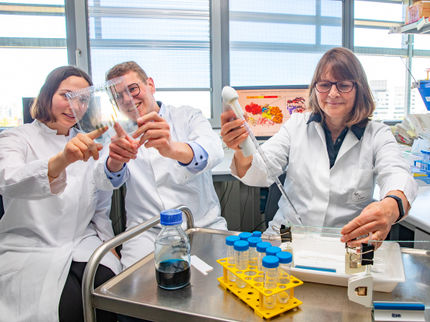Seals Introduced Tuberculosis to the New World
Seals carried tuberculosis from Africa to the Peruvian coast a new study in the journal 'nature' shows. Scientists including Mireia Coscollá Devís and Sebastien Gagneux from Swiss TPH analyzed 1000 years old human skeletons from Peru and discovered M. pinnipedii, a relative of the human TB-bacterium, which affects seals today. They assume that the exploitation of seals as a dietary staple facilitated the transmission from animals to humans. These results could have an impact on the future search for a vaccine against tuberculosis.
Scientists from the University of Tübingen, Arizona State University, the Wellcome Trust Sanger Institute, the University of Basel and the Swiss Tropical and Public Health Institute (Swiss TPH) isolated Mycobacterium pinnipedii from skeletons found in Peru which are at least 1000 years old. The pathogen is a relative of the TB bacterium that affects seals but only occasionally causes disease in humans today. These researchers assume that seals carried the pathogens from Africa to the Peruvian coast.
“The link to sea lions was unexpected” comments Sebastien Gagneux, from the Swiss Tropical and Public Health Institute. “Although this strain can make people ill, it is extremely rare and certainly not a common form of a tuberculosis infection in humans today”.
A new chapter in the history of tuberculosis in Latin America
The results shed new light on the history of tuberculosis in the Americas. It has long been assumed that humans introduced the disease to the ‘New World’ in the aftermath of colonization during the 15thcentury. «However, there were signs that the disease existed previous to the discovery of the New World. But it is the first time now that the pathogen of pre-Colombian tuberculosis could be identified», says Sebastien Gagneux from Swiss TPH.
New impulses for vaccine development
Tuberculosis remains a global threat. New drugs and vaccines are urgently needed to fight this poverty-related disease. Multi-drug resistance against first-line treatments is a growing threat in many countries. Therefore, the exploration of the evolutionary patterns of TB bacteria and their strategies to adapt to the human environment may help predict future patterns of the disease. This may also contribute to future drug discoveries and to the design of improved strategies for disease control.
Original publication
Other news from the department science

Get the life science industry in your inbox
From now on, don't miss a thing: Our newsletter for biotechnology, pharma and life sciences brings you up to date every Tuesday and Thursday. The latest industry news, product highlights and innovations - compact and easy to understand in your inbox. Researched by us so you don't have to.

























































